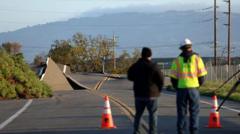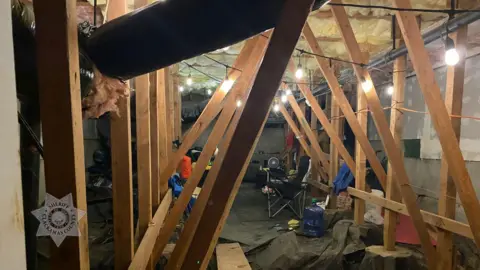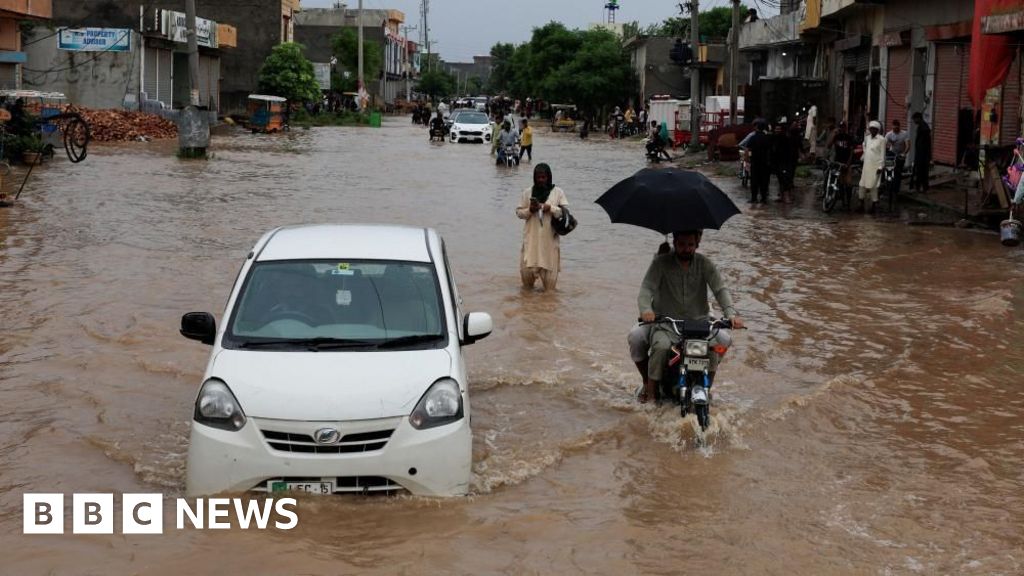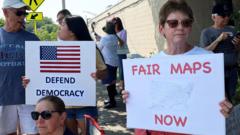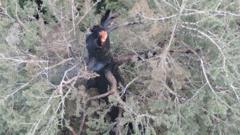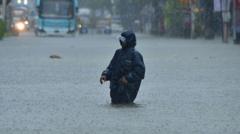Empty line 4
A significant weather event, termed a "bomb cyclone," is set to affect the US Northwest region, with meteorologists warning of severe rain, snow, and strong winds impacting over seven million residents. The National Oceanic and Atmospheric Administration (NOAA) reports that the storm has already begun to make its presence felt, with forecasts indicating that conditions will worsen as the week progresses, particularly through Friday.
The rapidly intensifying storm is the result of a significant drop in air pressure just off the Pacific Coast, a phenomenon expected to lead to heavy precipitation and strong winds in the region. Snow forecasts predict accumulations of around 2-3 inches (5-8 cm) per hour in the higher elevations, with totals in some areas potentially reaching between 10-20 inches (25-50 cm). Dangerous travel conditions and whiteout scenarios are anticipated, according to NOAA.
Impacts from the cyclone are already evident, particularly in the Seattle area, where strong wind gusts have begun to shape local conditions. The forecast suggests that these gusts, reaching up to 65 mph (29 mps), could lead to power outages, fallen trees, and challenging coastal surf conditions. The NOAA has classified much of northwest California at a "high risk" for excessive rainfall, indicating potential for dangerous mudslides.
In response to the developing storm system, the National Weather Service has issued multiple winter weather alerts, as well as a winter storm warning for various coastal regions. They caution that numerous flash floods, hazardous travel scenarios, and overall property damage could be expected as the storm reaches its peak intensity.
The meteorological term "bomb cyclone" describes a storm that mere moments becomes considerably stronger, resulting in severe weather. Characteristically, these cyclones undergo rapid drops in central air pressure, exceeding 24 millibars in a span of just 24 hours. Such weather phenomena are not unheard-of during this period of the year, as atmospheric river events have also made headlines throughout North America in recent weeks. However, the combination of an atmospheric river with a bomb cyclone raises the potential for a significant weather episode across the area.
A significant weather event, termed a "bomb cyclone," is set to affect the US Northwest region, with meteorologists warning of severe rain, snow, and strong winds impacting over seven million residents. The National Oceanic and Atmospheric Administration (NOAA) reports that the storm has already begun to make its presence felt, with forecasts indicating that conditions will worsen as the week progresses, particularly through Friday.
The rapidly intensifying storm is the result of a significant drop in air pressure just off the Pacific Coast, a phenomenon expected to lead to heavy precipitation and strong winds in the region. Snow forecasts predict accumulations of around 2-3 inches (5-8 cm) per hour in the higher elevations, with totals in some areas potentially reaching between 10-20 inches (25-50 cm). Dangerous travel conditions and whiteout scenarios are anticipated, according to NOAA.
Impacts from the cyclone are already evident, particularly in the Seattle area, where strong wind gusts have begun to shape local conditions. The forecast suggests that these gusts, reaching up to 65 mph (29 mps), could lead to power outages, fallen trees, and challenging coastal surf conditions. The NOAA has classified much of northwest California at a "high risk" for excessive rainfall, indicating potential for dangerous mudslides.
In response to the developing storm system, the National Weather Service has issued multiple winter weather alerts, as well as a winter storm warning for various coastal regions. They caution that numerous flash floods, hazardous travel scenarios, and overall property damage could be expected as the storm reaches its peak intensity.
The meteorological term "bomb cyclone" describes a storm that mere moments becomes considerably stronger, resulting in severe weather. Characteristically, these cyclones undergo rapid drops in central air pressure, exceeding 24 millibars in a span of just 24 hours. Such weather phenomena are not unheard-of during this period of the year, as atmospheric river events have also made headlines throughout North America in recent weeks. However, the combination of an atmospheric river with a bomb cyclone raises the potential for a significant weather episode across the area.

